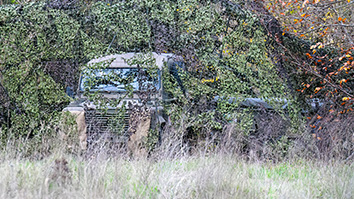In the last 17 years, SRI has earned more than $200 million in gross royalty and equity value from our licensing and venture portfolio. We have started more than 50 ventures with four IPOs—with a total market capitalization that exceeds $29 billion, and with many successful private company exits, most notably, Siri.
We are known for being an engine for innovation, and our license and venture process has created great value. Just to give a few examples:
- SRI has licensed drugs that treat infectious diseases such as malaria, saving thousands of lives
- We recently brought to market our cancer drug, Pralatrexate, which we licensed to Allos Therapeutics, and which has begun to help patients with late stage T-cell lymphoma
- We have licensed computer vision algorithms such as stablilization to companies such as Google and L3
- We’ve also launched companies such as Nuance, Intuitive Surgical, and Orchid Cellmark (publicly traded); Siri (acquired); and Trapit, Artificial Muscle, and Lightscape Materials in the growing areas of infotech, biotech, infotech, medical devices, cleantech, and advanced materials.
Why has SRI had such excellent success?
SRI has a disciplined innovation process designed to create the highest-value venture and license opportunities. We focus on meeting a challenging set of criteria:
- Important opportunity: A large, rapidly growing market opportunity.
- If it is a venture, it must have the potential for >$.5 billion market cap (this is one indicator that it is a disruptive market opportunity)
- An outstanding team
- A compelling, quantitative value proposition
- Differentiated product or service to successfully address the market opportunity
- Sustainable competitive barriers
- An effective positioning strategy for introducing the product into the marketplace
As a result, SRI focused on creating high-value licenses, and a number of ventures a year.
The reasons that SRI sets such a high standard are threefold:
- Expectation of success must be very high to justify the dedication of personnel otherwise committed to generating client-sponsored R&D revenues
- The probability of venture success is much higher when we work with top-tier venture capitalists, who will invest only in ventures that meet these criteria
- When we commit to a high value license or venture, we invest some of our most valuable intellectual property. If SRI chooses not to launch a venture, it can monetize the opportunity by using the technology to win new contracts or to continue to build future intellectual property
Our venture model is highly differentiated from other Silicon Valley incubators such as YCombinator or 500 Startups. In our paradigm, we create our own companies, invest deeply and carefully, almost always exclusively with SRI intellectual property, and have a very successful hit rate. In contrast, these competing incubators invest tens or hundreds of thousands of dollars into hundreds of startups and hope to get a return on their investment. In the current economic climate, they also have achieved success. Small investments in Facebook or Zynga for example, can still yield excellent return on investment. It will be interesting to see if that model will be sustainable in the future.
We are also highly differentiated from the university “tech transfer” model. Some universities, e.g., Stanford, Berkeley, MIT, and Carnegie Mellon, for example, have great success in commercialization—mostly due to the outstanding entrepreneurs on their faculty. Other tech transfer offices are largely not as successful—not even earning sufficient revenue to cover their costs. We believe their primary problem is the viewpoint most clearly represented by the words “tech transfer”: they look at technology first, and then seek to find companies that would like to license it. SRI’s approach is the opposite: we seek to understand customer problems and needs, and to understand the market opportunity. Only then do we develop technology solutions.
Much of our success as well as that of many great Silicon Valley companies such as Sun, Intel, and Cisco, can be attributed to the Bayh Dole Act. In 1980, when Senators Bob Dole and Birch Bayh spearheaded a law to give U.S. universities, small businesses and nonprofit organizations commercial rights to inventions that result from work funded by the government. As a result of this law, SRI has a treasure chest of technology resulting from our billions of dollars of government-funded of R&D contracts, worth many billions of dollars. In other words, the Bayh Dole Act has enabled SRI to create an innovation engine: the R&D contracts lead to high value intellectual property, which in turn helps us create high value companies and licenses. The value from these commercial successes then returns back to SRI—a nonprofit research institute— to help us: recruit and retain our excellent staff; invest in new R&D, invest in new equipment and facilities required for today’s research programs. Importantly, this creates an economic engine: the government’s investment in R&D at a nonprofit research and innovation center—namely, SRI—is being leveraged in new ventures, new products and services, and new jobs. Ultimately, this is a return on investment for U.S taxpayers.
How is SRI doing today?
We have an outstanding pipeline of emerging ventures, many of which are already funded. New ventures include Desti (funded), Tempo AI (funded), Appsure, Kuato Studios (funded), and Grabit. The SRI ventures team is interested in establishing partnerships, and brainstorming your venture and license ideas.



